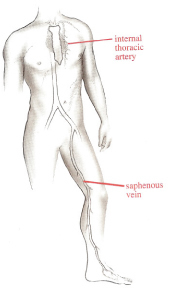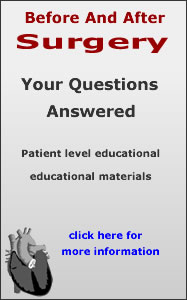CORONARY ARTERY DISEASE
The heart is a muscle that pumps blood to provide nutrients to the rest of the body, and the heart needs a steady supply of oxygen to sustain this function. Chest pain or Angina develops when the heart muscle is deprived of an adequate supply of oxygen, which in severe cases can result in a heart attack.
Coronary artery disease the most common cause of heart disease is caused by atherosclerosis, a process whereby cholesterol and other substances slowly build up a plaque over time narrowing or occluding the coronary arteries
There are several risk factors which speeds up atherosclerosis, and so it is important to work with your healthcare provider to control as many of the risk factors as possible, there by slowing down or reversing the plaque build up.
Risk Factors
These are genetic traits and lifestyle habits that increase your risk for developing Coronary artery disease and include:
- Cigarette smoking
- High blood Cholesterol
- High Blood Pressure
- Diabetes Mellitus
- Obesity
- Race
- Family history
- Sex
- Age
- Stress
Treatment
Coronary artery disease can be treated in various ways depending on the extent,severity of the blockages and normal or impaired pumping function of the heart muscle. The current treatment modalities used alone or in combination are:
- Medications
- Percutaneous balloon angioplasty and stenting
- Coronary artery bypass surgery
Coronary Artery Bypass Surgery (CABG)
CABG is most commonly reserved for patients with more extensive disease involving all three major coronary arteries supplying blood to the heart and especially in the presence of impaired pumping function of the heart muscle. More than half a million CABG procedures are performed each year in the United States. Blood flow is restored to the heart muscle during the operation, by removing most commonly veins from the legs and arteries from the chest wall to form a detour around the blockages. The new and enhanced blood flow usually relieves the angina symptoms and decreases the risk for future heart attacks.
During the operation a heart lung machine is typically used to pump blood throughout the body while the heart is arrested and kept still to allow performance of the bypass operation. On completion of the operation, the patient is weaned off the heart lung machine, while the heart resumes the pumping function of blood to the body.
Off-pump Bypass Surgery
In recent years more patients with suitable characteristics are able to undergo CABG procedures with use of the heart lung machine. The heart continues to pump blood to the rest of the body throughout the operation. Currently in the United States, it is estimated that about 25% of CABGs are performed using the off-pump technique.
Although off-pump patients lose less blood during surgery and run a lower risk of generalized inflammation that can damage organs, studies have been unable to prove that one bypass method is clearly superior to the other
Risks and Complications of CABG
As with any surgical procedure there are potential risks associated with CABG. The more serious ones include:
- Excessive post operative bleeding
- Breathing or other lung problems
- Wound Infection
- Irregular heart rhythm
- Heart attack
- Stroke
- Kidney problems
- Death
- Risks associated with anesthesia
With modern surgical and anesthetic techniques most patients do well and the risks for death has been significantly decreased. However certain subgroup of patients such as those undergoing emergency surgery, severe impairment of the pumping function of the heart muscle, end stage renal dialysis patients, advanced age, re-operations and multiple associated medical problems are at an increased risk.


